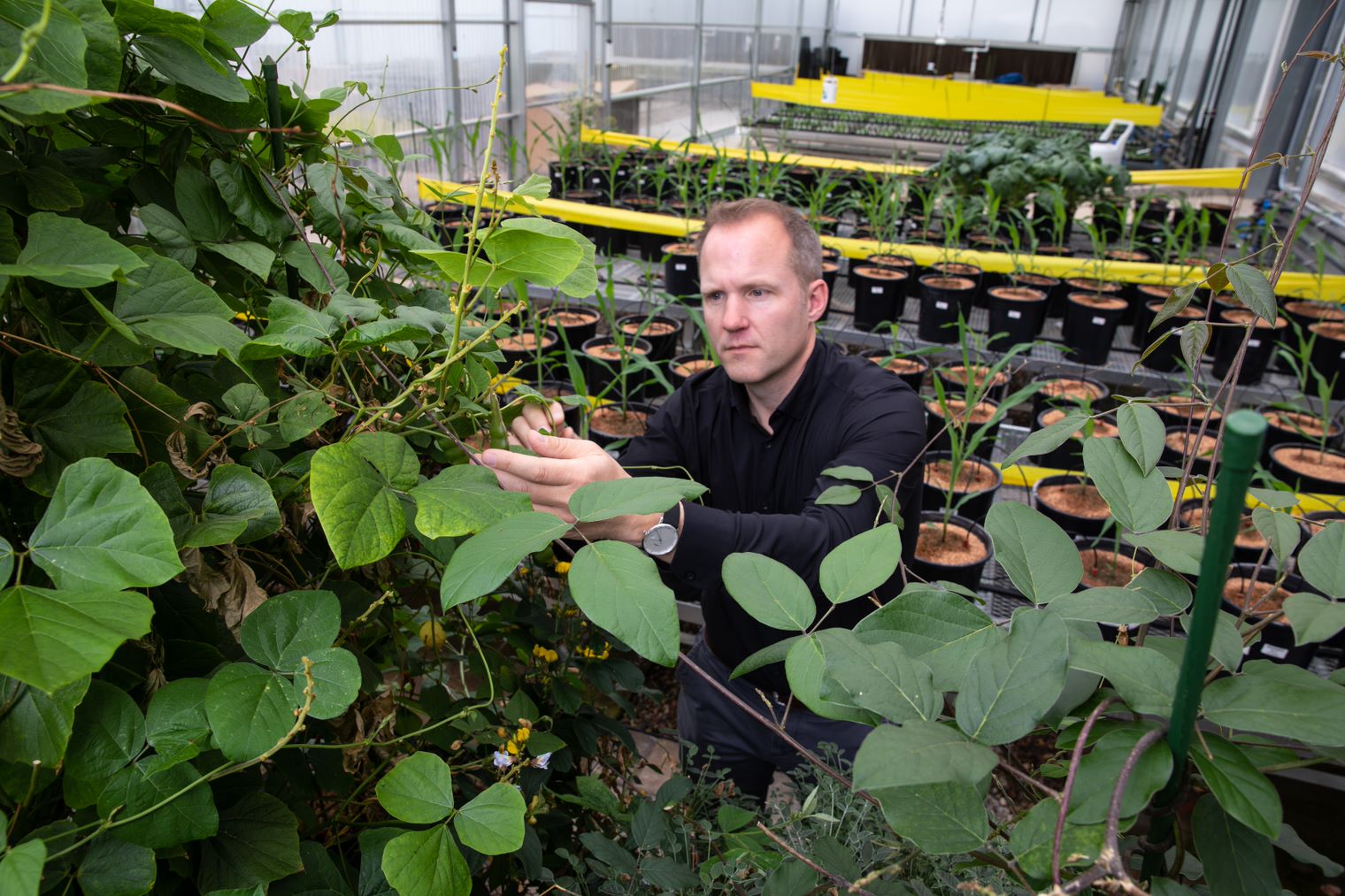_x000D_
Climate change causes a significant shift in the distribution of weather patterns resulting in highly variable environmental conditions that include higher temperatures and shift of seasons; changes in rainfall and subsequent variation in water availability; increased incidence of extreme natural events such as storms, flood and droughts; and a change in atmospheric gas composition._x000D_
_x000D_
Such fluctuations have a dramatic impact on the planet; shrinking glacier size, increase in sea levels, shifts in plant and animal ranges and patterns and a reduction in biodiversity. Climate change is therefore one of the major challenges that the world is facing._x000D_
_x000D_
Plants are key to mitigating the effects of climate change as they are a major sink of carbon from the atmosphere via photosynthesis._x000D_
_x000D_
However, plants are also a major source of atmospheric carbon by means of human actions such as burning fossil fuels, deforestation (which accounts for 1.1 x 1015 grams of carbon per year) and also through their use in agriculture (which is estimated to constitute a approximately 10 to 12 per cent of all greenhouse gas emissions)._x000D_
_x000D_
Agriculture itself is also directly affected by climate change. For example, high temperatures at flowering time reduce pollen viability and grain set in cereals. Global models predicted that a one degree rise in temperature will decrease yields by up to 10 per cent in a number of crops in all but high latitudes._x000D_
_x000D_
Water availability is a major rate-limiting factor for plant growth, and since 80 per cent of world agriculture is rain fed, changes in the amount and pattern of precipitation and evaporation will have a significant effect on crop development and yield._x000D_
_x000D_
In addition, extreme climate events, especially floods, have increased from 14 per cent of all natural disasters in the 1980s to 20 per cent in the 1990s and 27 per cent since 2000. This poses a major threat to agricultural harvests. Changing climatic conditions are also altering the patterns of weeds, plant pests and pathogens._x000D_
_x000D_
For example, phoma stem canker of oilseed rape is likely to spread northward in Europe and increase its severity as a result of higher winter temperature._x000D_
_x000D_
Similarly, because of human activity and climate change newly emerging fungal diseases are threatening plant, animal and ecosystems health._x000D_
_x000D_
Plant science can help to build the adaptive capacity to emerging problems by increasing our understanding of the effects of climate change on agriculture, biodiversity and whole ecosystems and using this knowledge to generate more resilient crop varieties such as those with increased drought resistance, water use efficiency and increased disease resistance._x000D_
_x000D_
This knowledge can also be used to promote the use of alternative and orphan crops, perennial crops, preservation of crop diversity and good agronomic practices._x000D_
_x000D_
Putting Plant Science to Work_x000D_
_x000D_
Plant based solutions can also help reduce global emissions of greenhouse gases._x000D_
_x000D_
For example by producing crops that make better use of nitrogen to reduce fertilizer use, reducing deforestation through the promotion agro-forestry and tree cropping systems and increasing the efficiency of land use for both food and energy through second-generation biofuels and the use of crop waste for biomass._x000D_
_x000D_
These approaches, together with precision agriculture, reduced waste, reduced tillage and incentives for environmental friendly farming practices, will help pave the way toward climate smart agriculture._x000D_
_x000D_
To begin with the Global Plant Council will centre its work in this area on its Stress Resilience initiative._x000D_
_x000D_













